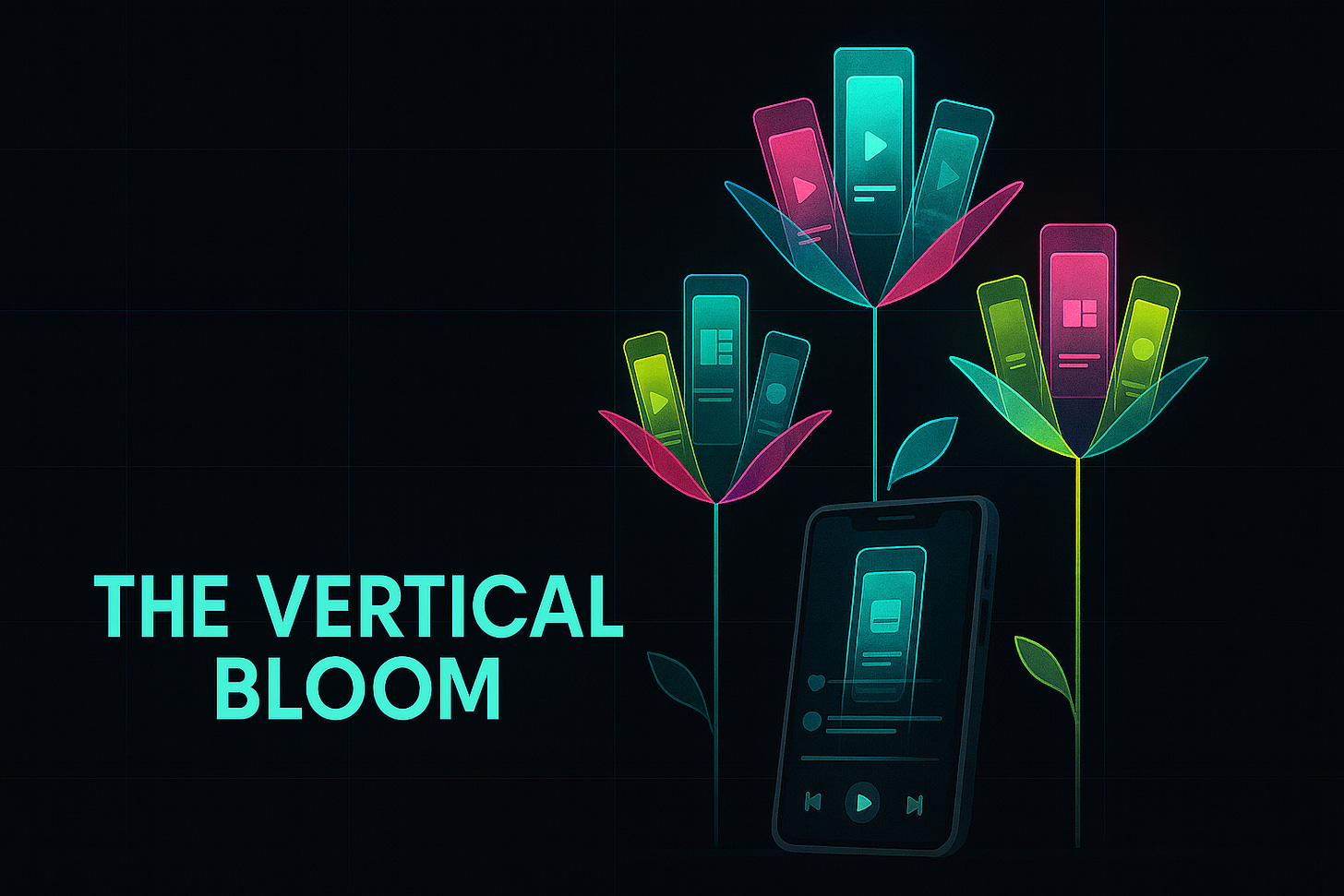The Vertical Bloom: 11/6/25
Your guide on the happenings of the vertical drama landscape.
Welcome to The Vertical Bloom, a weekly dive into the fast-growing world of microdramas and vertical storytelling. Here, we unpack the platforms, creators, and deals shaping the format that’s quietly redefining what it means to make—and watch—television in the mobile age.
Fresh Takes
Netflix Is Looking to Experiment with a Vertical Format, says CTO…
Netflix isn’t trying to be TikTok—but it’s learning from it. At TechCrunch Disrupt 2025, CTO Elizabeth Stone revealed the streamer is “testing a vertical video feed on mobile devices that starts to reimagine what mobile is,” acknowledging that audiences now live in scroll mode. The feature—designed to serve quick, snackable clips from Netflix’s existing library to promote watching on the platform—could quietly open the door for a new kind of storytelling. While Stone stopped short of confirming original vertical series, the move signals that even legacy giants like Netflix are starting to speak the language of the phone, blurring the line between streamer and feed.
New Study Shows YouTube As The Leading Social Media Platform for Microdramas
A new study by Ampere Analysis confirms what many creators have quietly suspected: YouTube, not TikTok, is the true home of microdramas. 44% of viewers who watch serialized short-form stories do so on YouTube, edging out TikTok’s 38%. The platform’s built-in ad infrastructure and endless shelf life give it a natural edge—clips can live, monetize, and resurface for years. The findings arrive just as Nielsen crowned YouTube the top platform for overall TV usage (12.6%), suggesting the line between short-form, creator-led content and “television” has officially collapsed. For creators, the message is clear—if microdramas are the new storytelling medium, YouTube has become their new network.
COL Group Announces The First Vertical Epic, Sequel to ‘From Rags to Rank One’
COL Group just announced what can only be referred to as the first vertical epic—a sequel to ‘From Rags to Rank One’. Released on the fast-rising platform FlareFlow, the period-action drama marks a bold step away from the romance and supernatural tropes that usually dominate the format. Adapted from a hit web novel, the story follows Xu Mu, a modern man thrown into medieval China, blending scale with the scroll. Shot over a month at Hengdian World Studios with a thousand-person crew and 40 lead actors, the first iteration has already racked up over 2 billion views, with 3 million fans pre-registered to watch the sequel. If microdramas once thrived on intimacy, ‘From Rags to Rank One’ proves there’s room for spectacle in the vertical frame.
A quote from Timothy Oh, General Manager at COL Group:
“This is a telling sign that the microdrama format is evolving. What began as fast, snackable storytelling has transformed into a platform for long-form, serialized IPs that audiences truly connect with. The typical CEO and werewolf romance plots are of the past — we’re entering a new era of content that spans genres from fantasy to sci-fi, male-driven adventure and historical epics. It’s happening now, and we expect this trend to accelerate internationally.”
Poster of ‘From Rags to Rank One’ from COL Group’s FlareFlow
Platform Spotlight
Singapore-based NetShort is quietly redefining the microdrama playbook—proving that localization, not imitation, drives scale. Launched in July 2024, the platform grew rapidly by subbing, dubbing, and marketing “climax clips” from proven Chinese hits for regional audiences. Its early engine was high-tension, emotion-forward genres. The usual suspects: revenge, billionaire romance, and supernatural twists that were optimized for fast, scrollable storytelling.
Now their roadmap leads to translation + local originals, with NetShort using its revenue to fund region-specific content across its top performing markets—Brazil (15% of downloads), the U.S. (10.6%), and Indonesia (10.6%). With over 10 million downloads, a #17 ranking on Google Play, and placement in Sensor Tower’s top 10 by overseas revenue, it’s quickly becoming a case study in how microdramas can travel—and localize—at speed.
NetShort Logo // Posters for Top-Performing Series’
Show Spotlight
We’re Your Parents (ReelShorts):
Logline: A college freshman comes home for her family’s legendary Thanksgiving feast and starts to suspect there’s something very wrong with her parents.
Genre: Horror
Released in late October of this year, the 28-part, US-produced ReelShorts series has garnered 2.4M plays and 72K favorites—impressive, but not groundbreaking. However, it is the first major installment of the horror genre, especially on a mainstream platform. Cinephiles across social media, including Nicolas Curcio, have praised the genre for fitting the format, saying that the 90-second episodes make the genre work well—especially since horror fans are already accustomed to the campy, low production value that comes with legacy media attempts. Could this be the first in line at opening the flood gates to vertical horror series’?
To understand what this kind of success means for the industry, I turned to the people shaping it behind the scenes…
Industry Insider
This week we sat down with Moises Zamora, founder of Artissn, a company redefining how film and TV projects are financed. His platform allows brands to live-bid on scenes or series for product placement, powered by AI tools that predict a project’s success through engagement and user-impression data.
To prove the model, Zamora has turned to microdramas, where results are fast and measurable. These short, vertical series let brands test integrations in real time, track audience reactions instantly, and see which stories truly convert. As Zamora put it:
“Microdramas deliver results fast. They can be produced and distributed in months, break out in a week, and outperform influencer posts when it comes to engagement.”
Through Artissn’s new partnership with Alta Media USA, Zamora is using the microdrama boom as proof that storytelling and advertising can evolve together—without losing the story.






